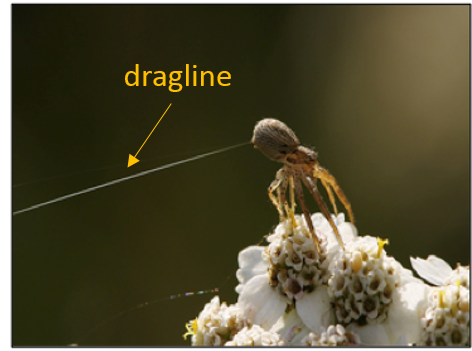BIOFLow International Research Experience for Students (IRES)
Mailing Address
Cleveland State University, Washkewicz College of Engineering
2121 Euclid Ave., WH 305
Cleveland, Ohio 44115-2214
Campus Location
Washkewicz Hall Room 305
2300 Chester Avenue
Phone: 216-687-2555
Fax: 216-687-9280
engineering@csuohio.edu
Website Issues Only
engineering@csuohio.edu
Dr. Longhua Zhao
Background.
Spiders can sense the wind breeze and travel ("ballooning", shown in the figure below) over distances as far as 3200 km and heights of 5 km [1]. Spiders are highly ranked predators in arthropods, the aerial dispersal significant impacts on agricultural economy and ecology. A better understanding of spider ballooning will improve flight physics and advance the bio-inspired design of airborne robotic devices. Ballooning spiders are usually very small (< 2 mg, [2, 3]), and cannot be easily tracked, hence field observations and lab experiments of spider dispersal are scarce. This project aims to determine the effects of key parameters (spider mass and the dragline length) in spider ballooning using controlled lab experiments, which allow understanding the interaction of the spider-drag line with surrounding air motion. Zhao's numerical simulations [3 ,4] have captured vortex rings shed from the dragline system in free-fall. A preliminary test was conducted to quantify the air-spider system using a high-speed PIV [5].

Figure 1. Tiptoe behavior in which a spider stands on tarsi, raises the abdomen and releases a dragline (indicated by arrow) in order to initiate ballooning. (www.ksat.com/)
IRES student involvement.
Dr. Zhao will work with an IRES student on this project. The IRES student will focus on the flow experiment to model the spider ballooning using a PIV method and compare test results to numerical modeling.
References
- E. L. Morley and D. Robert, Electric Fields Elicit Ballooning in Spiders, 2324-2330, 28(14), 2018
- Cho M, Neubauer P, Fahrenson C, Rechenberg I, An observational study of ballooning in large spiders: Nanoscale multifibers enable large spiders' soaring flight. PLOS Biology 16(6), 2018. https://doi.org/10.1371/journal.pbio.2004405
- L. Zhao, I.N. Panayotova, A. Chuang, K.S. Sheldon, L. Bourouiba, and L.A. Miller, Flying spiders: Simulating and modeling the dynamics of ballooning, in Women in Mathematical Biology: Research Collaboration Workshop, NIMBioS, Knoxville, June 2015, edited by A. T. Layton and L. A. Miller, Springer International Publishing, Cham, 179-210, 2017.
- K.S. Sheldon, L. Zhao, A. Chuang, I. N. Panayotova, L. A. Miller, and L. Bourouiba, Revisiting the physics of spider ballooning, in Women in Mathematical Biology: Research Collaboration Workshop, NIMBioS, Knoxville, June 2015, edited by A. T. Layton and L. A. Miller, Springer International Publishing, Cham, 163-178, 2017.
- R. Courtney, W. Zhang, T Stevens, L, Zhao, Flying spiders: At what velocity does a spider move in free-fall?, AIAA SciTech Forum 6-10 January 2020, Orlando, FL AIAA Scitech 2020 Forum, 2020.
Mailing Address
Cleveland State University, Washkewicz College of Engineering
2121 Euclid Ave., WH 305
Cleveland, Ohio 44115-2214
Campus Location
Washkewicz Hall Room 305
2300 Chester Avenue
Phone: 216-687-2555
Fax: 216-687-9280
engineering@csuohio.edu
Website Issues Only
engineering@csuohio.edu